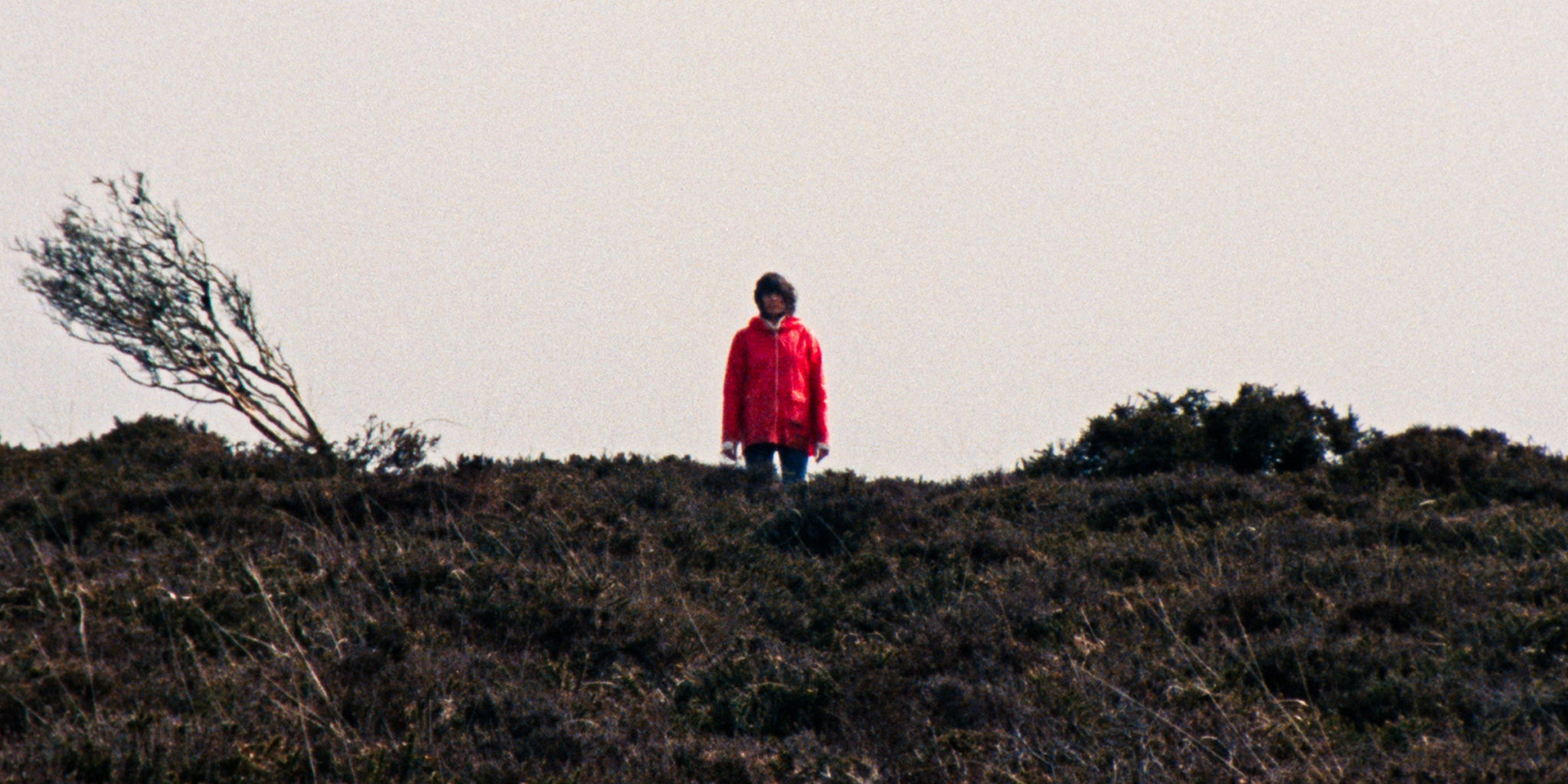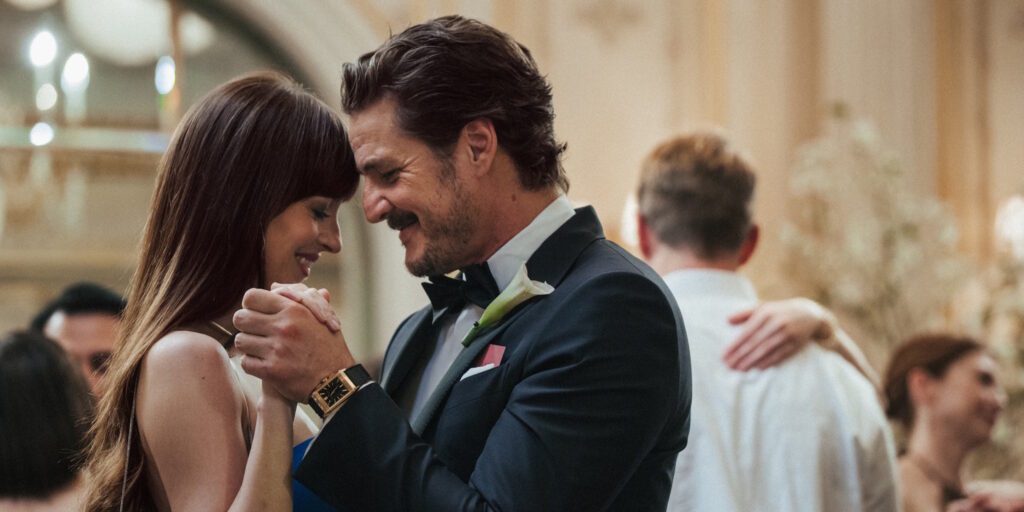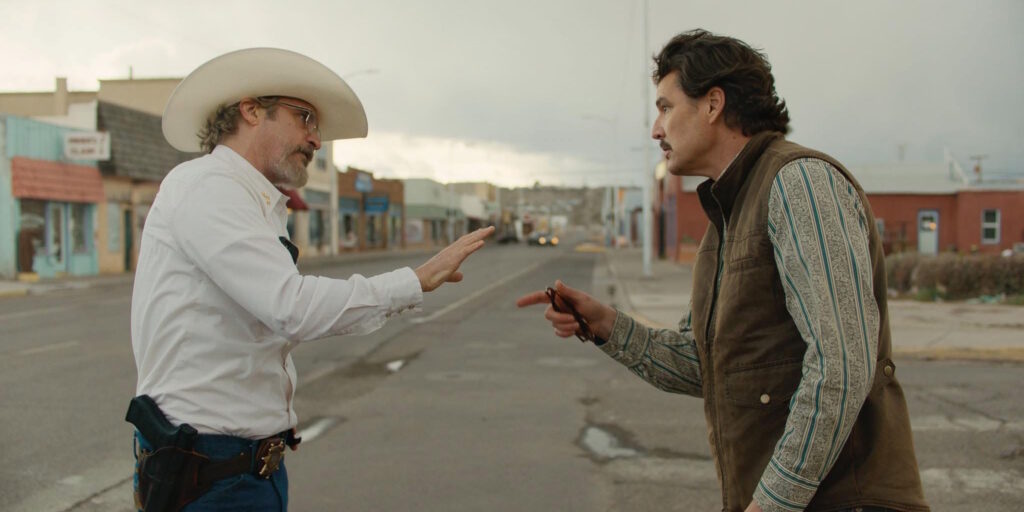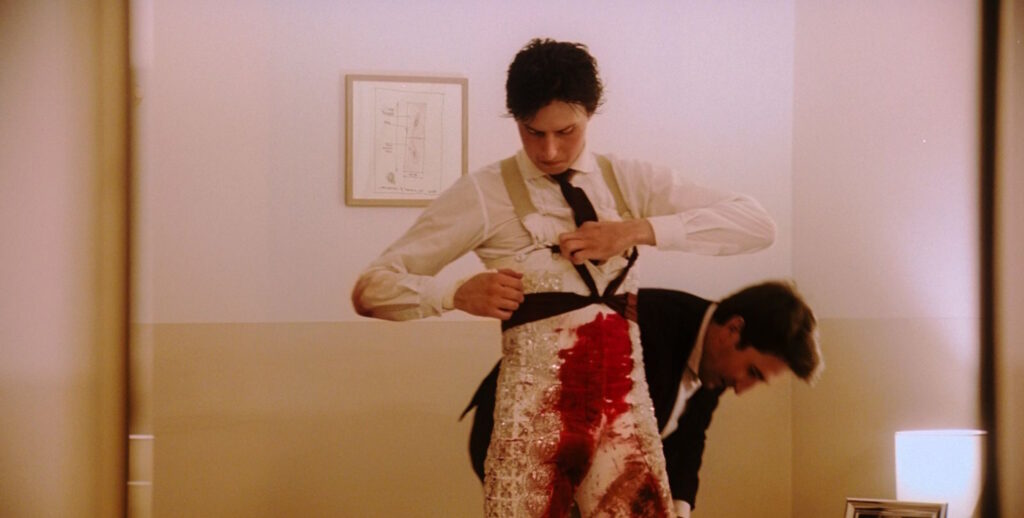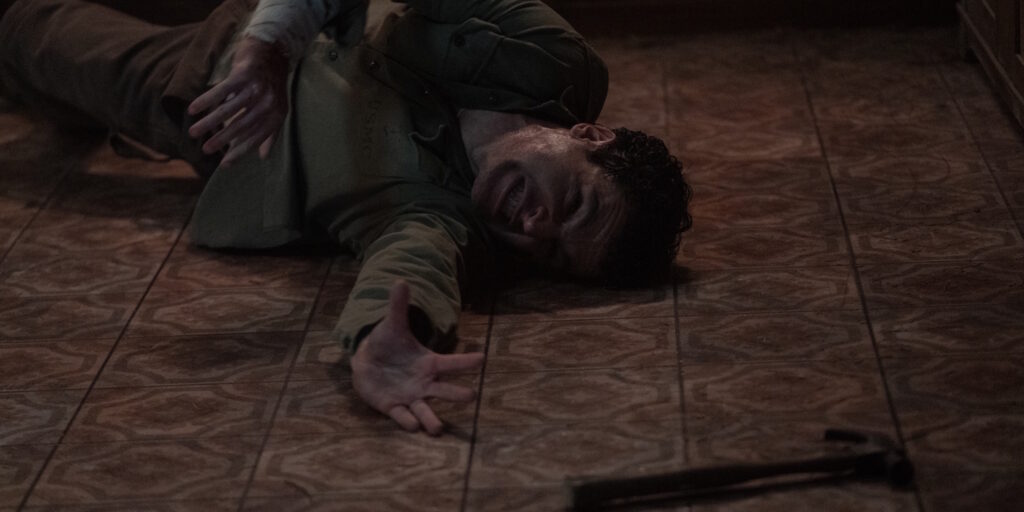In the flourishing yet factious landscape of contemporary horror cinema, Enys Men is the sort of feature that is inevitably affixed with that dreaded descriptor, “elevated horror.” Never mind that the phrase tends to elicit a response from most genre aficionados that ranges from abashed amusement to outright hostility. Somewhere, an entertainment writer is deploying the words with zeitgeist-tapping relish in reference to the unnerving and inscrutable sophomore feature from Mark Jenkin (Bait). As a category, elevated horror is generally meaningless and condescending, but in the specific context of Enys Men it feels particularly unsuitable. Jenkin’s feature dwells almost entirely outside the conventions of contemporary horror cinema. It reaches back to a bygone mode of filmmaking, in particular the weird, low-fi horror features that often sprouted in the rich soil of 1970s British television. Whether it amounts to anything beyond a reverent pastiche is questionable, but there is an undeniable eldritch potency to its images that can be difficult to shake.
Jenkin’s approach is so unconcerned with narrative that Enys Men can more accurately be described as a situation rather than a story. It is 1973, and a nameless, middle-age volunteer (Mary Woodvine) is hunkered down on a desolate, uninhabited island off the coast of Cornwall. As part of a never-explained botanical research project, she is investigating a rare species of delicate wildflower that grows on the isle’s moss- and lichen-encrusted outcrops. She dutifully records the soil temperature and her observations of a particular flower cluster (“no change”) in a handwritten daily log. This seems to be the extent of her scientific responsibilities, and she spends most of her time wandering the rocky moorlands and huddling in her snug stone cottage, waiting for a periodic resupply from the mainland.
Enys Men works its dark, insidious spell by lulling the viewer through repetition. Jenkin presents the volunteer’s activities with kitchen-sink clarity, depicting her entire daily routine two or three times before anything remotely unusual begins to occur. Every day, she tarries at an abandoned mining shaft on her way back from the flower patch, dropping a rock into its inky depths and listening for the clatter of the impact. She always returns to the cottage via the same route, making a sharp right at a curious standing stone. She starts the small generator in the house’s attached, collapsing greenhouse, then logs her findings. She listens to music on the crackling radio and makes a pot of tea. In the evening, she lies in bed reading by candlelight from the seminal British environmental manifesto A Blueprint for Survival.
It isn’t quite Jeanne Dielman: The action being depicted might be unhurried, but the film’s editing is relatively snappy, efficiently ushering the audience through the volunteer’s solitary, unplugged routine. Meanwhile, Jenkin conveys a redolent sense of place, layering these early sequences with insert shots of the island’s wind- and salt-scoured natural landscape. Combined with the overall languid pace and the near absence of dialogue, this results in a hypnotic effect, such that the viewer may not even register exactly when Enys Men begins to wobble on its axis. At one point, the volunteer makes tea before heading out to make her botanical observations, and this disruption of the film’s previously reliable rhythms roughly coincides with the first rumblings of unsettling weirdness.
Listening intently near the ground, the volunteer hears rhythmic thuds emanating from deep within the earth. (One need not be versed in Cornish folktales to apprehend that this is ominous.) The menhir near the cottage seems to change position or vanish entirely. Shades of the past begin to walk in the daylight: sailors in drenched yellow slickers, crooked-toothed tin miners caked in dirt and sweat, and a mysterious adolescent girl with a thousand-yard stare. A pale lichen appears on the flower petals, a change that wouldn’t be quite so distressing if the same filaments weren’t also sprouting from the old scar on the volunteer’s abdomen. Enys Men mutates like a seasick nightmare, eventually fragmenting into a surreal jumble so feverish that it’s difficult to parse what is happening, let alone what it all means. Viewers who are compelled to unriddle the film’s hallucinatory strangeness are bound to be frustrated, perhaps irately so. Jenkin’s feature is utterly uninterested in explaining itself – although it does lurch about according to a certain internal dream logic.
Indeed, Enys Men is fond of repeating images and motifs, evoking an eerie, oneiric sensation of déjà vu. Totemic articles of clothing in bright primary colors stand out against the muted greens, browns, and grays of the island. A bloody laceration across the left palm is twinned with a self-inflicted burn on the right. A logo glimpsed on a tin of dried milk recurs as a septet of mute farm maids, stomping menacingly in unison like ritual dancers. A plaque memorializing a rescue boat lost at sea recalls the dates in the volunteer’s log and prompts the viewer’s realization that the tragedy’s anniversary is approaching. Jenkin is absorbed with the notions of recurrence and isolation, but decoding Enys Men into a drum-tight exegesis is probably a futile endeavor. It’s quite a feat to make Robert Eggers’ The Lighthouse (2019) – another folk-tinged psychedelic tale of island-bound lunacy – look positively lucid in comparison.
Jenkin employs a toolkit that convincingly reproduces the texture of a low-budget 1970s feature, shooting on 16mm color film via clockwork Bolex cameras fitted with vintage lenses. The illusion is also reinforced by many of the director’s stylistic choices, such as the liberal use of crash zooms and the exclusive reliance on post-sync sound. The volunteer’s distinctive, bright-red raincoat seems quite deliberately designed to recall a similar garment in Don’t Look Now (1973), but Jenkin is evoking a broader tradition of British “country horror” from the era, encompassing landmarks such as The Stone Tape (1972), The Wicker Man (1973), Symptoms (1974), and The Shout (1978). Yet the Cornwall native appears to be most influenced by a deep catalog of mostly forgotten British folk-horror and ghost-story telefilms: Robin Redbreast (1970), The Rainbirds (1971), and Penda’s Fen (1974), part of the BBC’s Play for Today (1970-84) anthology; Lawrence Gordon Clark’s Ghost Story for Christmas (1971-78) series; and the seminal kiddie nightmare-fuel serial Children of the Stones (1976).
By setting his film in the 1970s and faithfully replicating the mood and aesthetic of the period, Jenkin heightens his character’s sense of seclusion. What little connection to the outside world exists is maintained by analog means: a short-wave radio, a tinny wireless set, and too-infrequent boat deliveries of precious petrol. Little wonder that the volunteer practically begs the boatman (Edward Rowe) to linger a while and keep her company. However, whenever the island’s ancient power presents its protagonist with a seemingly stable handhold of normalcy, it inevitably crumbles in her grasp. Similarly, Enys Men is almost spitefully resistant to abstraction or interpretation. Doubtlessly, some audience members will throw up their hands at the film’s stubborn opacity. Yet even viewers ill-disposed to this kind of opaque art-horror affectation may find it hard to dismiss the feature’s most disconcerting moments, which have a habit of infiltrating the skin like some itchy, ancient spore.
Enys Men opens in select theaters on Friday, March 31.
